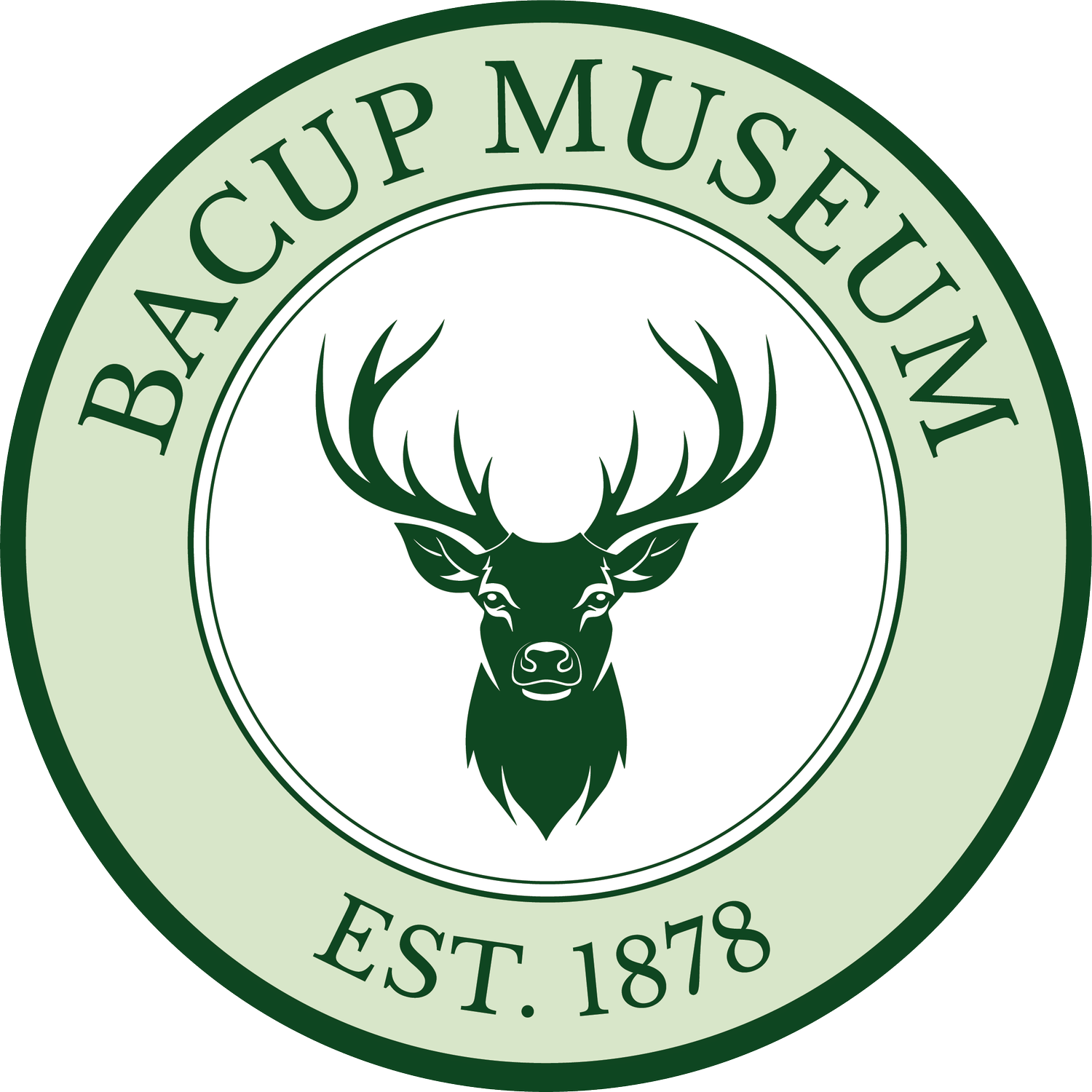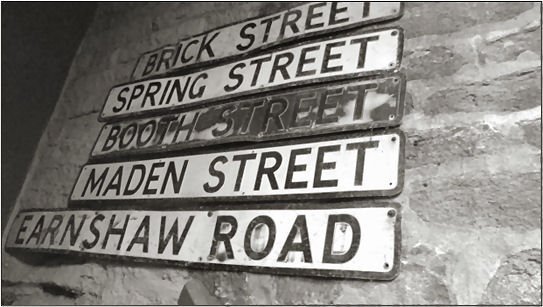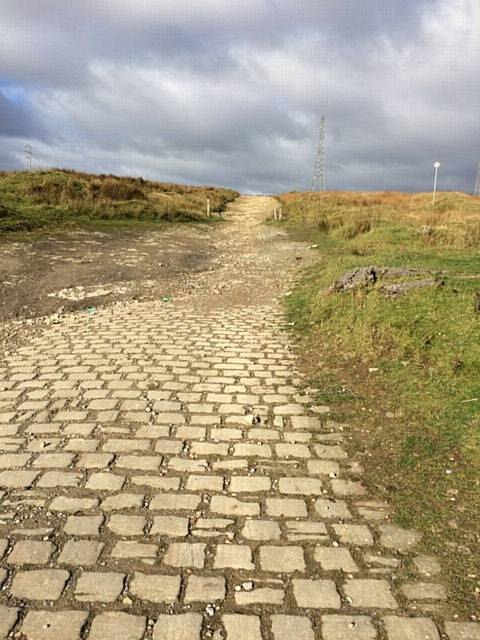On Patrol With Just A Stick!
Initially, the ratio was one rifle to every ten men, which was later improved to one for every five men. During numerous air raid alerts, the men patrolled with only a stick and an L.D.V. armlet for quite some time.
A Pig Went Swimming
The River Irwell was the receptacle for all solid matters that were found to be inconvenient or unprofitable. Old building materials, ashes, and cinders from the houses, and from all the steam engines in the town were poured into the river.
A Fireside Chat
The Bacup old school, which was originally built for a Baptist Meeting House, was situated on the east branch of the Irwell Stream ( or syke as it was known) which formed the boundary confine of the village at the junction ( or lumb) of the two Irwell streams. There were no houses, whatever, then on the opposite or SE side, but a bridge crossed over the eastern branch.
Making A Splash
These baths were opened on Saturday last, the 16th inst., by Mr. J. H. Maden, М.Р., having been presented to the borough of Bacup by his late father. The baths have been designed and carried out by Messrs. Mangnall and Littlewoods, architects, Manchester, selected in a competition, the cost, including land, being about £10,000.
Water Water Everywhere
In 1841, when Bacup’s first census was conducted, the town’s water supply was severely lacking. The absence of a reservoir meant that residents relied solely on scattered wells. The quality of water from these wells varied significantly, with some sources being described as resembling sewage.
Rossendale Footwear Industry
The Rossendale Shoe and Slipper Industry celebrated its 150th anniversary in November 2024. This historic industry was founded by John William Rothwell, a resident of Holts Buildings on Millar Barn Lane in Waterfoot.
Migration from Norfolk
Between the years 1824 and 1865, 35 cotton mills were erected in Bacup. People flocked from the agricultural districts such as Norfolk, Suffolk, and Cambridgeshire to work in Bacup.
Helter Skelters and Baby Elephants
The arrival of the fair transformed the town into a bustling hub of excitement and colour. The open land opposite the police station at Bankside became a vibrant tapestry of stalls and amusements, each vying for attention with bright signs and the enticing aromas of sweet treats.
Clogs on Broadway
Fifty years ago, I was attending the old St Mary’s R.C. School, on Bankside. Bacup at that time was a dimly lit cotton town, composed in the main of pubs, chip shops, cloggers and butchers shops, and local characters. We were in the era of the knocker-up and the lamplighter, clogs and shawls, horse and cart, silent pictures, tippler toilets and tup’enny mixture.
Bacup Highwaymen
Once recognized as the Bull & Dog Inn, the establishment known as the Blue Ball Inn now rests as a vacant field. A date stone bearing the initials J.G.B. and the year 1792 marks its historical significance. Remarkably, John Cropper maintained his role as the landlord for nearly three decades, from 1848 to 1877, succeeding his father James in the position.
Bacup History
1669 Certain lands in Spotland were sold off to different persons.
1672 Fairwall farm built about this date.
1692 The Chapel of Rossendale was built on what is today’s Bacup library the former Mechanics Institute. It was used as a school then demolished in 1844.
1702 The first Stubbylee Hall built, further additions occurred in 1736, 1809, and 1872.
1710 The date when the Chapel of Rossendale used by the Baptist, as a meeting house.
1713 A fulling mill was established at Hugh Mill, Cowpe.
The Rossendale Felt Industry
The introduction of a new manufacturing process in 1854 by Edward Rostron marked a significant development in the Rossendale district. This new industry involved the production of felt and emerged as a consequence of the declining importance of Rossendale as a traditional woollen manufacturing centre.
What’s in a Name
Meetings of the Bacup Local Board of Health were first convened on the 17th of December 1863 and were initially held in the Mechanics Institute, moving to a purpose-built room over the shops in the newly opened market hall in August 1867. Bacup at this time was separated into five wards, Bacup, Greave, Rockcliffe, Broadclough and Acre Mill.
The Cotton Famine Road
During the American Civil War, the disruption in cotton supply had a significant impact on towns and villages in Lancashire, including Bacup. It is estimated that out of the 6,000 workers in Bacup, half were left unemployed while the other half had reduced working hours, often working only 2-3 days a week.
Migration and Famine
Migration has been an integral part of human history for centuries, with people leaving their homelands in pursuit of seasonal work or better opportunities. As the town of Bacup expanded rapidly during the 1840s, a tragic event in Ireland had a profound impact on its population.
Bacup At War _ Warrant Officer Fred Cooper
Warrant Officer Fred Cooper 115 Squadron R.A.F aged 24, a well-known Bacup cricketer and player for Lancashire CCC Second XI, joined the R.A.F on the 24th July 1940. Fred’s parents, John and Margaret Cooper of 114 Bankside Lane, received word that Fred had been reported missing after flying operations on Wednesday, 29th July 1942.
Deeds Not Words
Lewis Harcourt was a prominent figure in British politics, serving as the Member of Parliament for Rossendale from 1904 to 1917. His stance against women’s suffrage was a notable aspect of his political career, reflecting the prevailing attitudes of the time towards the issue of gender equality.
Built of Stone
Throughout the 1840s, Bacup underwent a significant transformation driven by the booming wool-spinning and cotton industries. This led to a surge in population, with approximately 8,000 residents calling Bacup home by this time.
Father Gaetano Fracassi
Father Gaetano Fracassi, pictured with the 1913-1914 St Joseph’s football team holding the Joshua Craven Hoyle Cup. Served as the parish priest in Stacksteads for nine years, from 1913 until 1922.




















